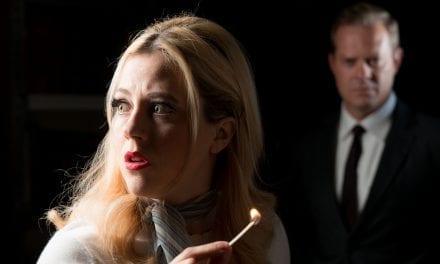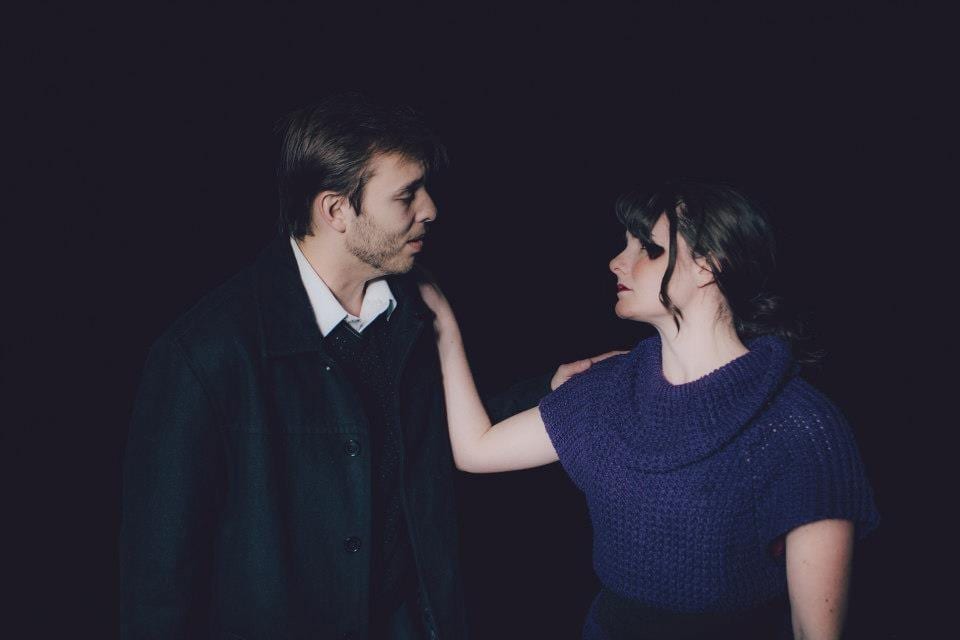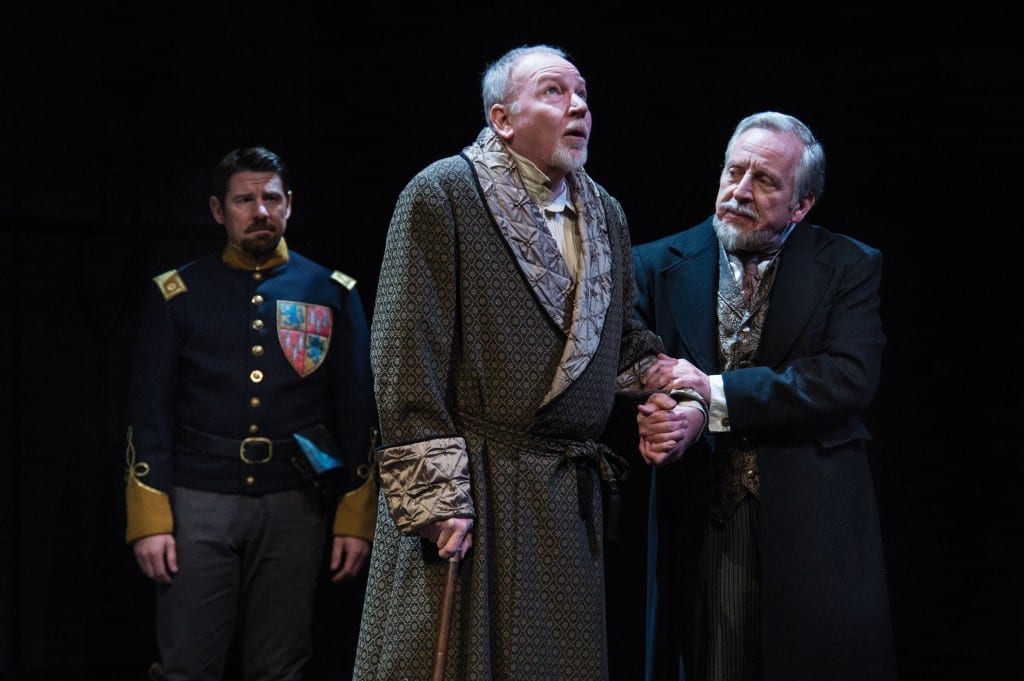OREM — I can’t stop thinking about Vincent in Brixton. At its most basic level, the play is a piece of historical fiction about the two years Vincent Van Gogh spent in London as an art dealer. Beyond its skeleton, though, Vincent in Brixton is an exploration of despair, of inspiration, and of how the two are sometimes the same thing. Nicholas Wright’s script is beautifully written, interwoven with allusions to Van Gogh’s paintings and poignant descriptions of depression. And Utah Valley University’s production does the script justice in every respect.

Show closes October 6, 2012.
The story introduces a 20 year old Vincent Van Gogh—before he’s started painting, or hallucinating, or cutting off body parts—lodging with the Loyer family. Upon moving in, Van Gogh (James McKinney) is quickly warned by fellow lodger Sam (Eric Phillips) that nothing in this house is as it seems. What I found most interesting about Sam’s reference the household’s hidden qualities was that, as an audience member, I learned what he meant in an opposite order to how Van Gogh understood it. The chemistry between Sam and Eugenie (Britni Wing) was evident as soon as they were on stage together, but Van Gogh remained oblivious to their relationship. Contrastingly, I wasn’t shown the dimensions of the landlady Ursula’s (Elizabeth Golden) character until Van Gogh pointed them out. The play makes a point of exploring these differences in how individuals understand the world around them.
Mckinney’s portrayal of Van Gogh was breathtaking; I’m still in awe of his performance. At first I wasn’t so sure. I thought he might be taking his Van Gogh impression a little overboard, that no one could be that awkward. But the longer he was on stage, the more I realized he was playing the character in exactly the right way. Because I felt like I knew that kid. He was the math wiz I sat next to in junior high who was always drawing snakes wrapped around swords and talking about the crystals he needed to buy for his light saber. You know the one: He fidgeted all the time and never looked you in the eye. He was the kid you realize now was probably dealing with any combination of Asperger’s, ADHD, or mood disorders. But at the time you just thought he was a little off, like Eugenie says on first meeting Vincent, “That’s a very stormy man.” McKinney’s acting was flawless, including his Dutch accent (When he spoke French with a Dutch accent, I wanted to throw roses all over the stage.). And his chemistry with Ursula (Elizabeth Golden) was the icing on the cake.
Golden’s performance as Ursula was more subtle than McKinney’s, but just as raw and just as familiar. I saw her suffering on the faces of friends going through dark times. And when Golden described the night sky and the chill air, I felt like I was getting to understand them better. The action of this play was more emotion than event, and I believed every word Golden said and every feeling she expressed.
Each performance was relateable and thought provoking. Wing and Phillips as Sam and Eugenie were a pleasant reprieve in the midst of McKinney and Golden’s intensity. Their interactions together were charming, and their relationships with the other characters were compelling. Jessamyn Svensson achieved a perfect balance between endearing and infuriating as Van Gogh’s sister Anna.
For all my raving about the cast, the crew (though too many to name individually) were equally as impressive. The set lent itself beautifully to the subject matter. The play takes place entirely within the Loyer home, replete with the intricacies of 19th century poverty. Lighting occasionally made one of the walls translucent, thus allowing us to see the action of characters in another room. The costumes likewise told an important part of the story and did so in minute detail. The crew’s work complemented and easily matched the actors’ performances. Christopher Clark, producer and director, pulled together a remarkable production. Alternatingly funny, charming, introspective, and even frightening, every aspect of the show left a lasting impression. Like I said, I can’t stop thinking about it.
I used to wonder why artistic giants always seemed to go crazy. But after seeing Vincent in Brixton, I wonder if it’s the other way around. Perhaps the cascading emotional landscape some people hazard is what gives them the ability to create art the rest of us connect with. These artists can relate to our deepest despair because they’ve walked that valley, and they’re intimate with its every ridge and byway.




